Neural Tissue and Nervous System: Structure, Function, and Repair
1/28
There's no tags or description
Looks like no tags are added yet.
Name | Mastery | Learn | Test | Matching | Spaced |
|---|
No study sessions yet.
29 Terms
What are the primary functions of the central nervous system (CNS)?
Integrating, processing, coordinating sensory data and motor control; intelligence, memory, learning, and emotion.
What comprises the central nervous system (CNS)?
The brain and the spinal cord.
What is the role of the peripheral nervous system (PNS)?
Provides sensory information to the CNS and carries motor commands from the CNS to peripheral tissues and systems.
What are the two subdivisions of the peripheral nervous system (PNS)?
Afferent nervous system (sensory) and efferent nervous system (motor).
What does the afferent nervous system do?
Brings sensory information to the CNS, beginning at the receptors.
What does the efferent nervous system do?
Carries motor commands to muscles or glands, beginning at the CNS and ending at an effector.
What are the two divisions of the efferent nervous system?
Somatic nervous system (voluntary control of skeletal muscles) and autonomic nervous system (involuntary control of muscles).
What are the two branches of the autonomic nervous system?
Parasympathetic and sympathetic.
What is the function of neuroglia or glial cells?
Support, nourish, and protect neurons in the CNS and PNS; do not participate in sending or generating nerve impulses.
What types of cells make up the central nervous system (CNS)?
Astrocytes, oligodendrocytes, microglia, and ependymal cells.
What is the role of astrocytes in the CNS?
Shield neurons from contact with other neurons, maintain the blood-brain barrier, create a framework for the CNS, and guide embryonic neural development.
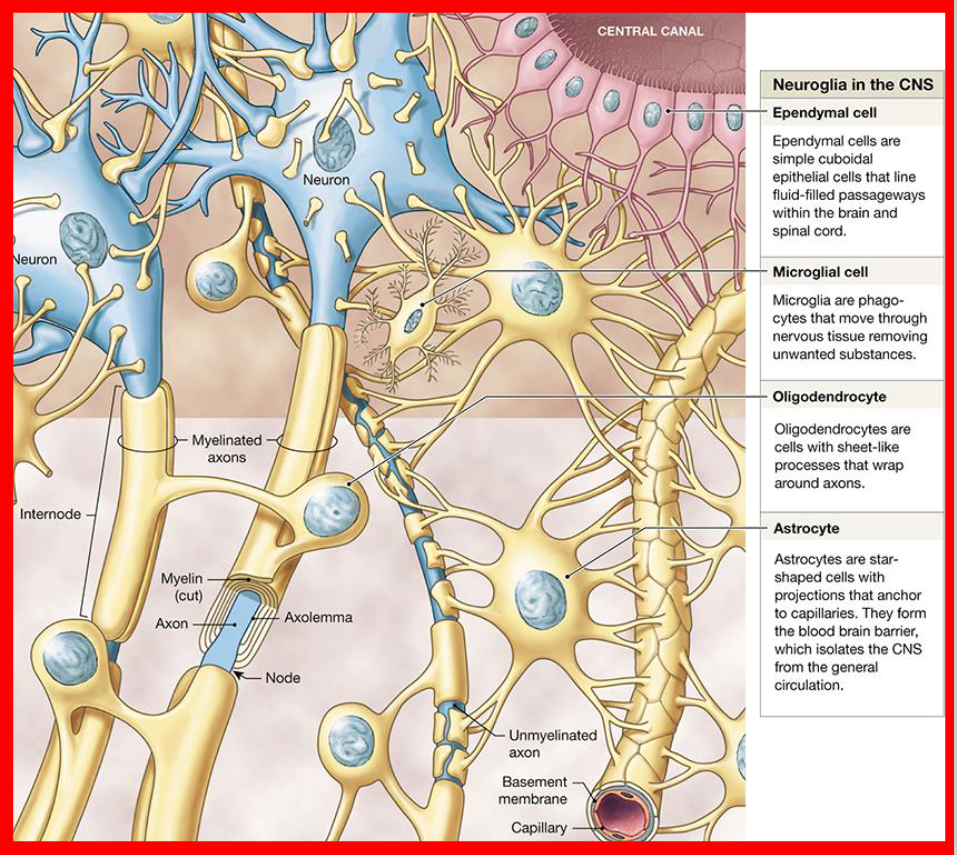
What is the function of oligodendrocytes?
Wrap around axons of CNS neurons for myelination.
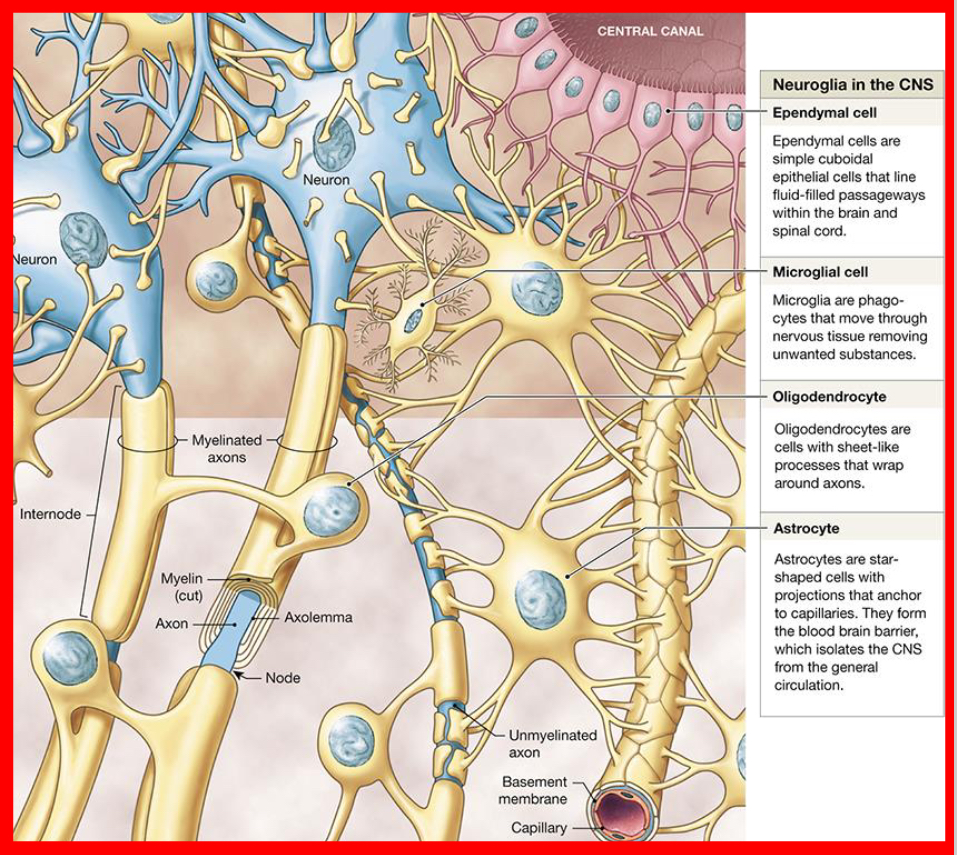
What do microglia do?
Engulf cellular debris, waste products, and pathogens.
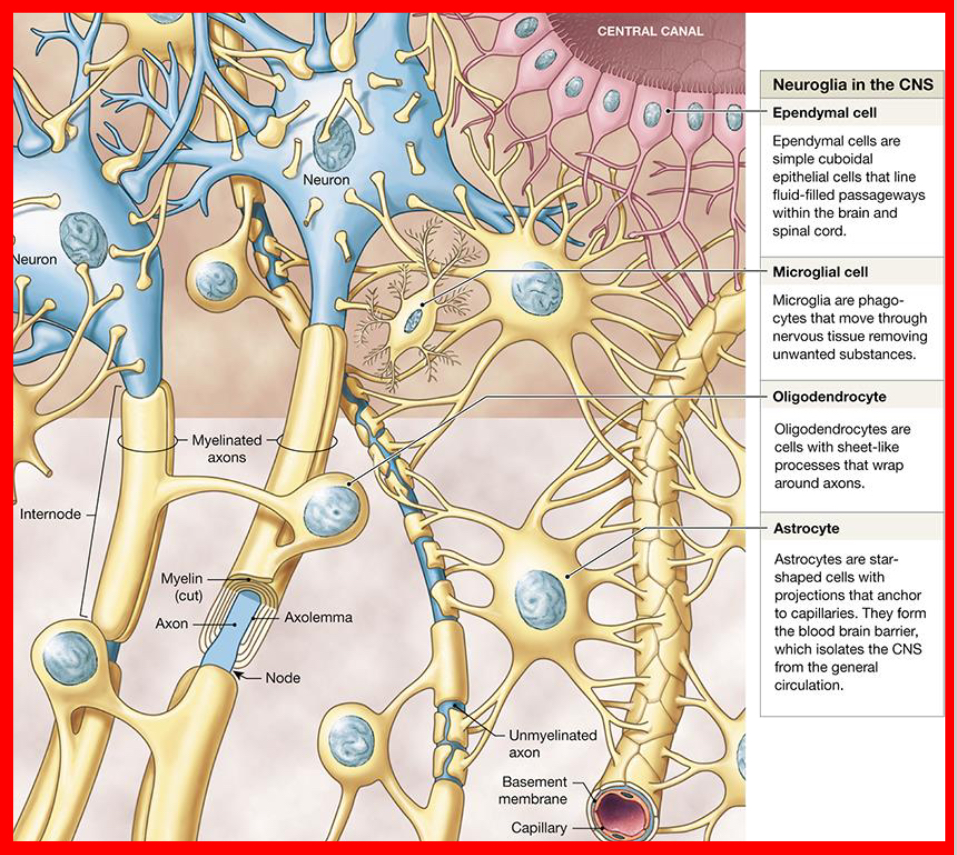
What is the role of ependymal cells?
Line ventricles of the brain and central canal of the spinal cord; involved in the production and circulation of cerebrospinal fluid (CSF).
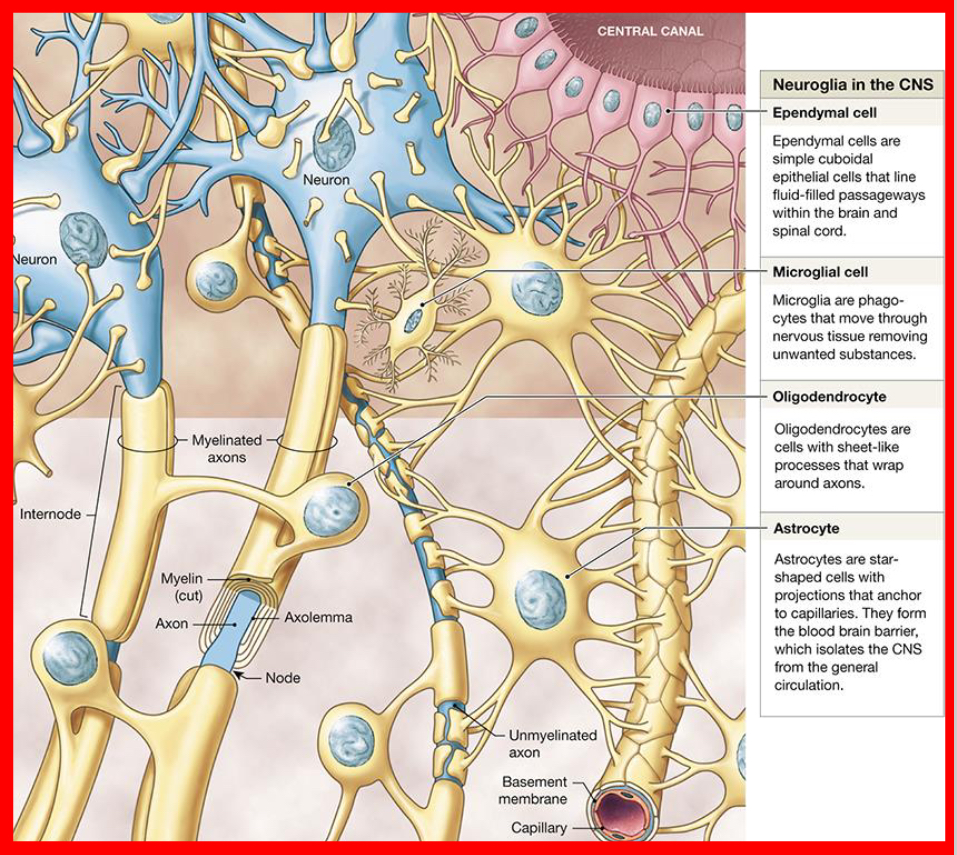
What types of cells are found in the peripheral nervous system (PNS)?
Schwann cells and satellite cells.
What is the function of Schwann cells?
Myelinate axons from PNS neurons and direct regeneration of damaged axons.
What are the main parts of a neuron?
Cell body (soma), dendrites, and axon.
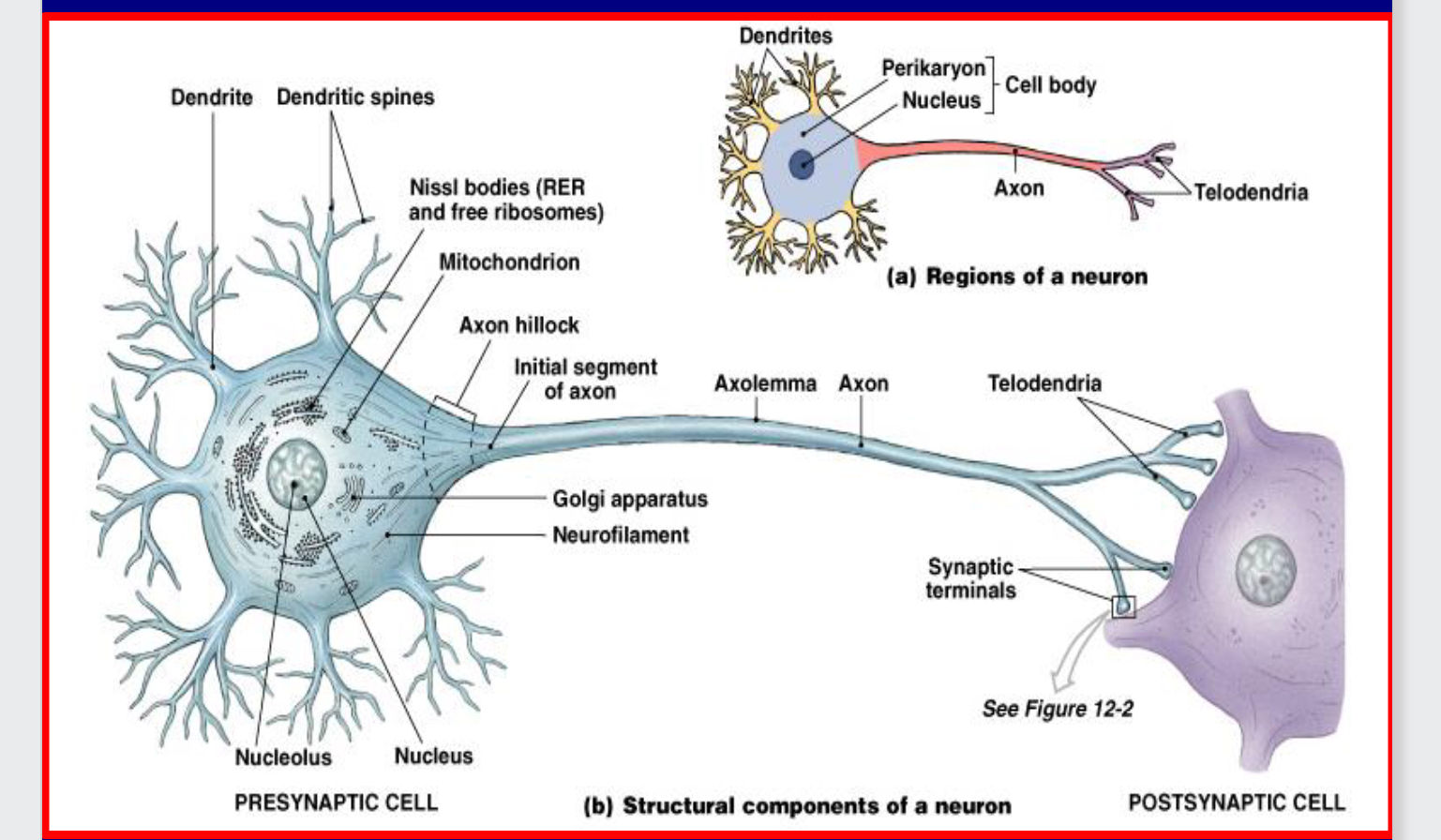
What is the function of dendrites?
Receive or initiate impulses; short and highly branched.
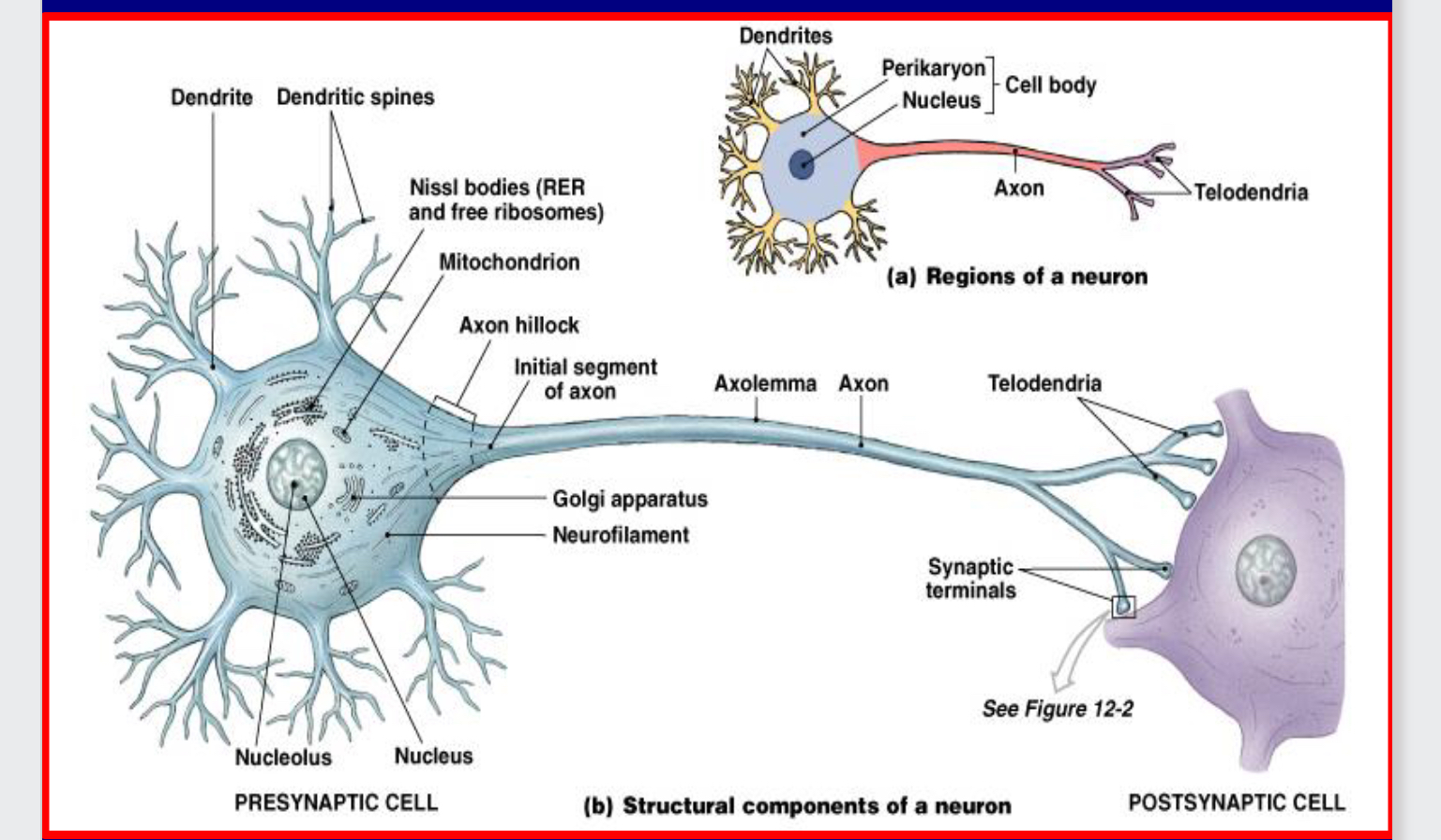
What is the axon and its main function?
A single, long cytoplasmic process that propagates electrical impulses (action potentials) to another neuron, gland, or muscle cell.
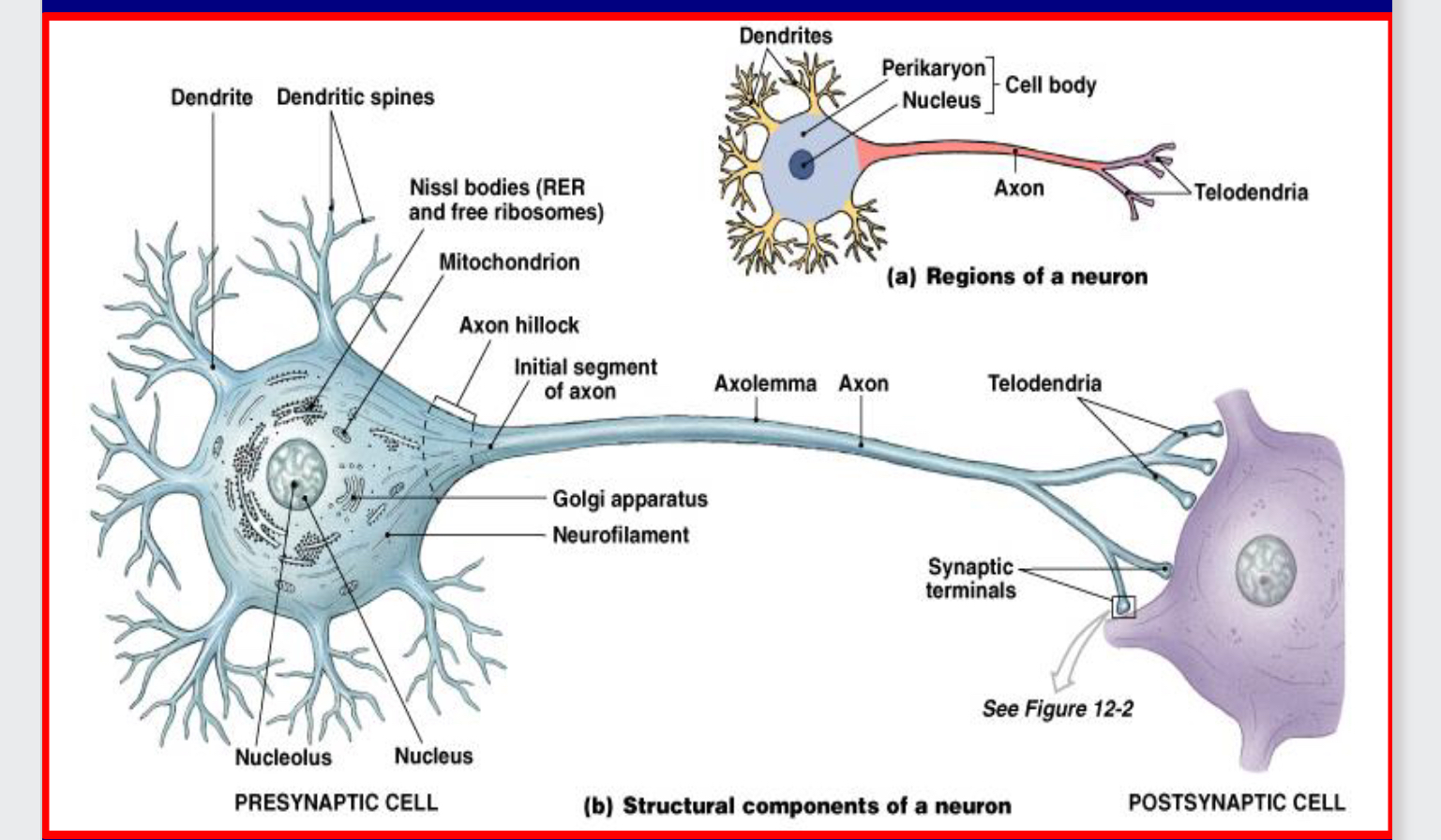
What is the axon hillock?
The thickened region at the base of the axon where action potentials are initiated.
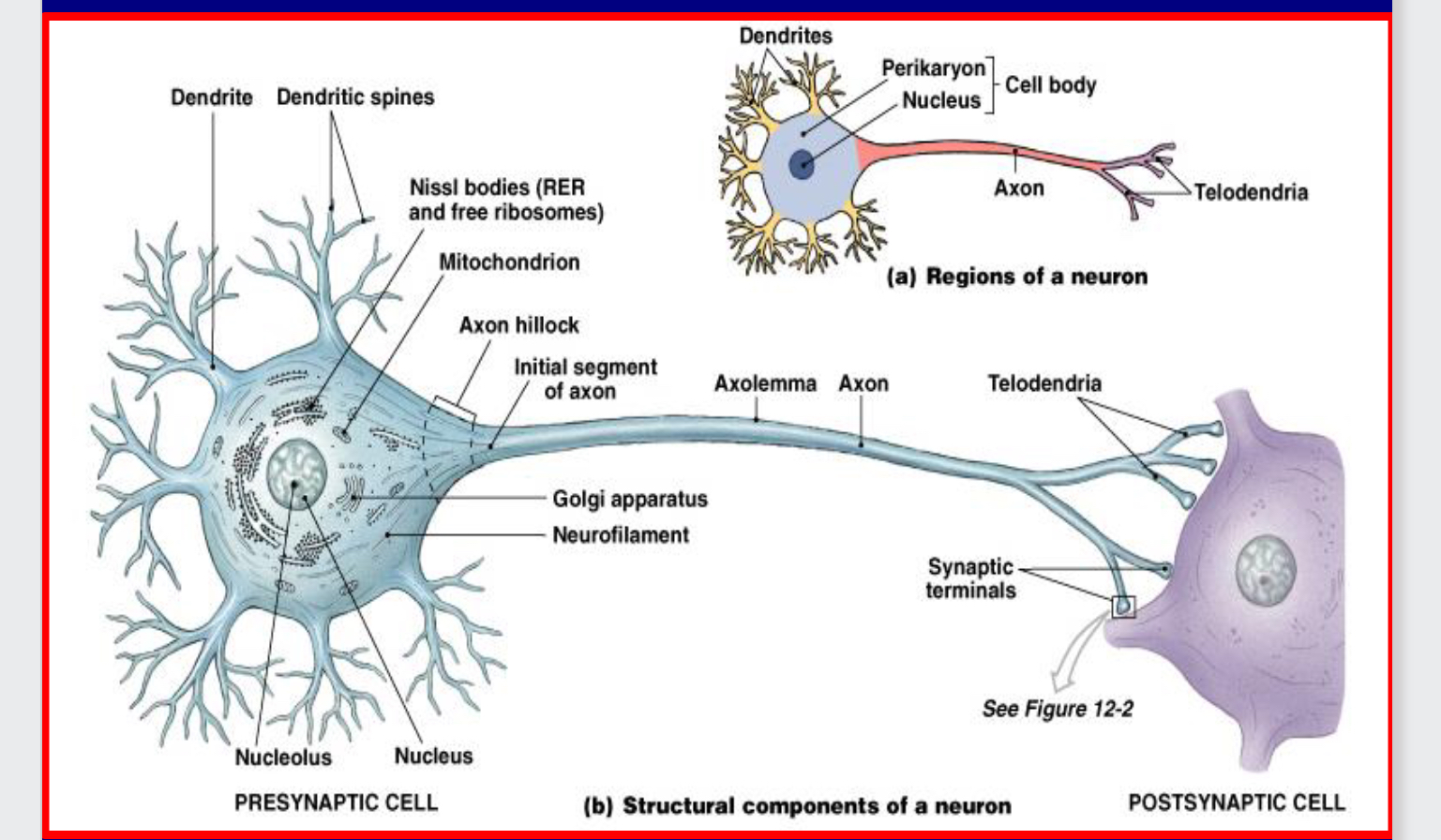
What is the myelin sheath?
A multilayered lipid and protein covering produced by neuroglia that acts as an electrical insulator and increases the speed of nerve impulses.
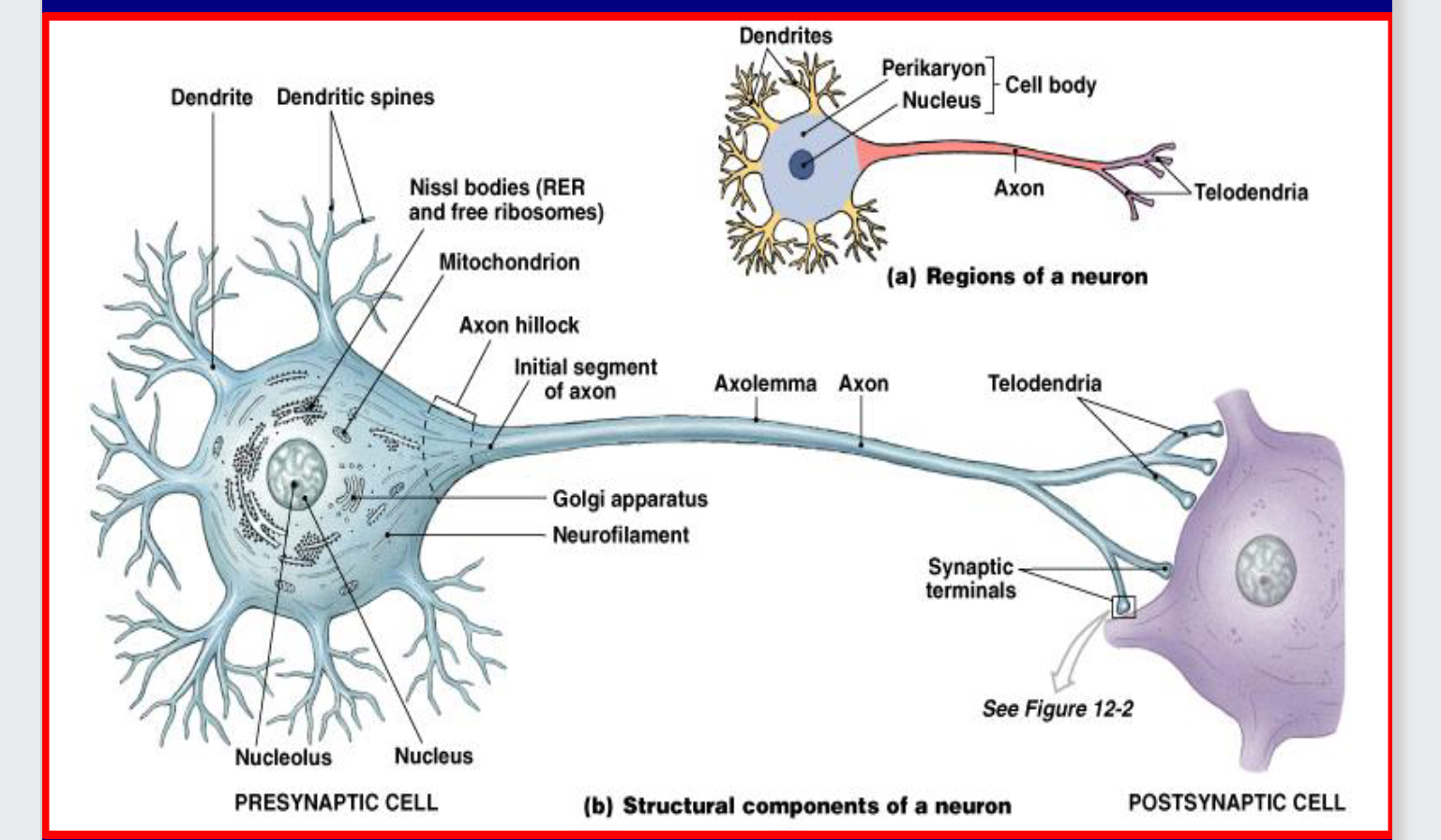
What are the differences in myelination between the PNS and CNS?
In the PNS, Schwann cells myelinate axons and form a neurolemma; in the CNS, oligodendrocytes myelinate multiple axons without forming a neurolemma.
What are the three structural classifications of neurons?
Bipolar neurons, unipolar neurons, and multipolar neurons.
What are sensory (afferent) neurons responsible for?
Transmitting nerve impulses from receptors toward the CNS.
What do motor (efferent) neurons do?
Transmit nerve impulses from the CNS to effectors.
What is the role of interneurons (association neurons)?
Distribute sensory information and coordinate motor activity; involved in information processing, memory, planning, and learning.
What is the process of Wallerian degeneration?
Occurs after nerve injury; myelin sheath breaks down, and macrophages clean up debris.
What is the significance of the neurolemma in PNS repair?
It allows for the regeneration of damaged axons if the cell body is intact.
Why is repair limited in the CNS?
Oligodendrocytes do not form a neurolemma and inhibit regeneration; astrocytes form scar tissue that acts as a barrier.